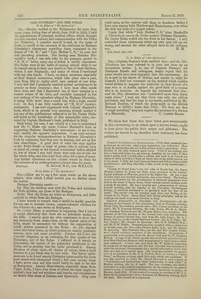HPB-SB-7-24: Difference between revisions
mNo edit summary |
mNo edit summary |
||
| (2 intermediate revisions by the same user not shown) | |||
| Line 8: | Line 8: | ||
{{Style P-HPB SB. Title continued |The Evolution Theory Considered in its Relation to Theosophy|7-23}} | {{Style P-HPB SB. Title continued |The Evolution Theory Considered in its Relation to Theosophy|7-23}} | ||
... | {{Style P-No indent|brought forward. There has been for many months past a lively controversy carried on in an orthodox religious paper, the ''Christian World,'' in which one of the combatants maintains that “conditional immortality” is a distinct tenet of Christ’s doctrine. It is true he takes the view that it is conditioned by the acceptance or non-acceptance of Christ as our Saviour. Although I should find it difficult to believe that a difference of opinion as to the meaning of Christ’s life and mission, could constitute either a barrier or a passport to heaven, I am free to admit that there is some force in the other part of his argument.}} | ||
The following passages, taken together, are, I think, presumptive evidence that the doctrine of unconditional immortality is not taught in the New or Old Testaments. | |||
(1.) “For what is a man profited if he shall gain the whole world and lose his own soul?” (Matt. xvi. 26.) | |||
(2.) “Fear not them which kill the body, but are not able to kill the soul: but rather fear him which is able to ''destroy ''both soul and body in hell.” (Matt. x. 28.) | |||
(3.) ‘‘If by any means I may attain unto the resurrection of the dead.” (Philip, iii. 11.) | |||
(4.) “The soul that sinneth it shall die.” (Ezek. xviii. 20.) | |||
(5.) “Let him know that he which converteth the sinner from the error of his way shall save a soul from death, and shall hide a multitude of sins.” | |||
(6.) “And this is the record, that God hath given to us eternal life and this life is in His Son. He that hath the Son hath life, and he that hath not the Son of God hath not life.” | |||
Looking at the whole of the Apostolic teachings, as well as those of Christ Himself, in a wider view than that which usually obtains, I see much to favour the belief that “salvation” meant saving the soul ''alive,'' and not saving it from eternal torments. | |||
I submit, in conclusion, (1) that the theory of evolution, if true at all, is true of the soul primarily, and only secondarily of the body; | |||
(2) that it is quite compatible with natural and revealed religion, and with the facts of psychology; (3) that it should modify some articles of the Spiritualist creed, especially those which concern the soul’s origin. | |||
<center>HUMAN LIFE.</center> | |||
{{Style P-Poem|poem=Between two worlds life hovers like a star, | |||
’Twixt night and mom, upon the horizon’s verge; | |||
How little do we know that which we are! | |||
How less what we may be! The eternal surge | |||
Of time and tide rolls on, and bears afar | |||
Our bubbles; as the old bursts, new emerge, | |||
Lashed from the foam of ages, while the graves | |||
Of empires heave but like some passing waves. | |||
{{Style P-Signature in capitals|Byron.}}}} | |||
| Line 32: | Line 72: | ||
| item =2 | | item =2 | ||
| type = article | | type = article | ||
| status = | | status = proofread | ||
| continues = | | continues = | ||
| author =Baikie, R. | | author =Baikie, R. | ||
| Line 39: | Line 79: | ||
| subtitle = | | subtitle = | ||
| untitled = | | untitled = | ||
| source title =Spiritualist | | source title = London Spiritualist | ||
| source details =March 22, 1878 | | source details = No. 291, March 22, 1878, p. 136 | ||
| publication date = | | publication date = 1878-03-22 | ||
| original date =1878-03-22 | | original date =1878-03-22 | ||
| notes = | | notes = | ||
| Line 47: | Line 87: | ||
}} | }} | ||
... | <center>''To the Editor of ''“''The Spiritualist.” ''</center> | ||
{{Style S-Small capitals|Sir}},—Having resided on the Neilgherries for more than seven years, during four of which, from 1830 to 1835, I held the appointment of principal medical officer, which brought me into constant contact and communication with the Todas (or Todaows), I consider myself bound, in the cause of truth, to testify to the accuracy of the strictures on Madame Blavatsky’s statements regarding them contained in the letters of “H. M.,” and “Late Madras C. S.,” in your last and preceding numbers. Hot having seen Madame Blavatsky’s book, I can only refer to the passages quoted in a H. M.’s” letter, every one of which is wholly inaccurate, The Todas were in the habit of coming almost daily to me to consult me as to their own health or that of their children, whom I saw frequently, and many of whom I vaccinated with my own hands. I have, on many occasions, especially at their funeral ceremonies, which take place once a year, seen from fifty to eighty adult men present at one time. I may add that I generally received special invitations to be present on these occasions; that I have been often inside their huts, and that I discovered one of their temples in a remote corner of the hills, and carefully examined it, but saw nothing of the splendour alleged by Madame Blavatsky, it being little more than a small hut, with a high, conical roof. In fact, I can fully confirm all “H. M.’s” counterstatements. I am well acquainted with Colonel Marshall’s book, which is in general very accurate, though neither it nor any of the publications referred to by Dr. Carter Blake add much to the knowledge of this remarkable tribe, conveyed by Captain Harkness’s book, published in 1832. | |||
Such being the case, I am utterly at a loss to understand how Dr. C. Blake can quote Colonel Marshall’s book as supporting Madame Blavatsky’s statements: to me it conveys exactly the opposite impression. I can only account for the singular misapprehensions in Madame Blavatsky’s book by supposing that they rest on hearsay, and not on her own observation. A good deal of what she says applies to the Peiki-Tarali—a kind of priest, who is seldom seen or heard of, except at the funeral ceremonies before alluded to, but of whom I was told there were only one or two for the whole tribe, and who hold their office for a term of years. Any further discussion on this subject would be fitter for the columns of an anthropological journal than for yours. | |||
{{Style P-Signature in capitals|R. Baikie, M.D., late H.E.I.C.S.}} | |||
Edinburgh. | |||
| Line 72: | Line 120: | ||
| item =4 | | item =4 | ||
| type = article | | type = article | ||
| status = | | status = proofread | ||
| continues = | | continues = | ||
| author =Blake, C. Carter | | author =Blake, C. Carter | ||
| Line 78: | Line 126: | ||
| subtitle = | | subtitle = | ||
| untitled = yes | | untitled = yes | ||
| source title =Spiritualist | | source title = London Spiritualist | ||
| source details =March 22, 1878 | | source details = No. 291, March 22, 1878, p. 136 | ||
| publication date =1878-03-22 | | publication date = 1878-03-22 | ||
| original date = | | original date = | ||
| notes = | | notes = | ||
| Line 86: | Line 134: | ||
}} | }} | ||
... | <center>''To the Editor of ''“''The Spiritualist”''</center> | ||
{{Style P-Signature in capitals|Sir}},—Captain Burton’s work entitled ''Goa; and the Blue Mountains ''has been referred to in your last issue by an'' ''anonymous writer. I, as one of Captain Burton’s old'' ''European friends and colleagues, deeply regret that his'' ''name should have been imported into the controversy. As'' ''he is now in the desert of Midian, and unable to reply for'' ''himself, I shall not comment on the method which enables'' ''veiled writers to suggest the authority in their favour of a man who is in Arabia against the good faith of a woman'' ''who is in America. As regards the statement that ''Goa; and the Blue Mountains ''was “published more than thirty'' ''years since,” I may say that there was only one edition'' ''published, and that the copy in my hands, published by Mr.'' ''Richard Bentley, of which the press mark in the British'' ''Museum is 10055 c bears date 1851. We thus see that'' ''“rough unveiling” may not require the presence of a Burton'' ''or a Blavatsky. | |||
{{Style P-Signature in capitals|C. Carter Blake}} | |||
{{HPB-CW-separator}} | |||
We think that those who have taken part anonymously in this controversy, in an attack upon a known writer, ought to have given the public their names and addresses. The writers are known to us, therefore their testimony has been published. | |||
| Line 109: | Line 165: | ||
| volume =7 | | volume =7 | ||
| page =24 | | page =24 | ||
| item = | | item =6 | ||
| type = article | | type = article | ||
| status = | | status = proofread | ||
| continues = 25 | | continues = 25 | ||
| author = | | author = | ||
| Line 118: | Line 174: | ||
| subtitle = | | subtitle = | ||
| untitled = yes | | untitled = yes | ||
| source title =Spiritualist | | source title = London Spiritualist | ||
| source details =March 22, 1878 | | source details = No. 291, March 22, 1878, p. 136 | ||
| publication date =1878-03-22 | | publication date = 1878-03-22 | ||
| original date = 1878-03-15 | | original date = 1878-03-15 | ||
| notes = | | notes = | ||
| Line 126: | Line 182: | ||
}} | }} | ||
... | <center>''To the Editor of “The Spiritualist.”''</center> | ||
{{Style S-Small capitals|Sir}},—Allow me to say a few more words on the above subject, after which I shall trouble you no further about the matter. | |||
Madame Blavatsky asserts:— | |||
1st. That the children seen with the Todas, and mistaken for Toda children, are those of the Badegas. | |||
2ndly. That the Todas are white as Europeans, and differ entirely in colour from the Badegas. | |||
I have merely to remark that it would be hardly possible for any one to mistake brown, copper-coloured children for the children of a race white as Europeans. | |||
{{Style S-HPB SB. Continues on|7-25}} | Dr. Carter Blake is mistaken in supposing that I intend to assert absolutely that there are no poisonous snakes on the hills. I merely gave my own experience to show that any immunity from snake-bites, on the ''highest ''parts of the hills, might be accounted for without the supposition of occult powers possessed by the Todas. As you descend lower and lower down, no doubt poisonous snakes gradually {{Style S-HPB SB. Continues on|7-25}} | ||
{{HPB-SB-footer-footnotes}} | {{HPB-SB-footer-footnotes}} | ||
{{HPB-SB-footer-sources}} | |||
<gallery widths=300px heights=300px> | |||
london_spiritualist_n.291_1878-03-22.pdf|page=6|London Spiritualist, No. 291, March 22, 1878, p. 136 | |||
</gallery> | |||
Latest revision as of 13:50, 6 March 2024
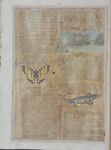
< The Evolution Theory Considered in its Relation to Theosophy (continued from page 7-23) >
brought forward. There has been for many months past a lively controversy carried on in an orthodox religious paper, the Christian World, in which one of the combatants maintains that “conditional immortality” is a distinct tenet of Christ’s doctrine. It is true he takes the view that it is conditioned by the acceptance or non-acceptance of Christ as our Saviour. Although I should find it difficult to believe that a difference of opinion as to the meaning of Christ’s life and mission, could constitute either a barrier or a passport to heaven, I am free to admit that there is some force in the other part of his argument.
The following passages, taken together, are, I think, presumptive evidence that the doctrine of unconditional immortality is not taught in the New or Old Testaments.
(1.) “For what is a man profited if he shall gain the whole world and lose his own soul?” (Matt. xvi. 26.)
(2.) “Fear not them which kill the body, but are not able to kill the soul: but rather fear him which is able to destroy both soul and body in hell.” (Matt. x. 28.)
(3.) ‘‘If by any means I may attain unto the resurrection of the dead.” (Philip, iii. 11.)
(4.) “The soul that sinneth it shall die.” (Ezek. xviii. 20.)
(5.) “Let him know that he which converteth the sinner from the error of his way shall save a soul from death, and shall hide a multitude of sins.”
(6.) “And this is the record, that God hath given to us eternal life and this life is in His Son. He that hath the Son hath life, and he that hath not the Son of God hath not life.”
Looking at the whole of the Apostolic teachings, as well as those of Christ Himself, in a wider view than that which usually obtains, I see much to favour the belief that “salvation” meant saving the soul alive, and not saving it from eternal torments.
I submit, in conclusion, (1) that the theory of evolution, if true at all, is true of the soul primarily, and only secondarily of the body;
(2) that it is quite compatible with natural and revealed religion, and with the facts of psychology; (3) that it should modify some articles of the Spiritualist creed, especially those which concern the soul’s origin.
Between two worlds life hovers like a star, Byron.
|
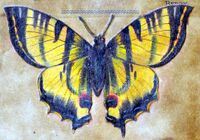
"Isis Unveiled" and the Todas
Sir,—Having resided on the Neilgherries for more than seven years, during four of which, from 1830 to 1835, I held the appointment of principal medical officer, which brought me into constant contact and communication with the Todas (or Todaows), I consider myself bound, in the cause of truth, to testify to the accuracy of the strictures on Madame Blavatsky’s statements regarding them contained in the letters of “H. M.,” and “Late Madras C. S.,” in your last and preceding numbers. Hot having seen Madame Blavatsky’s book, I can only refer to the passages quoted in a H. M.’s” letter, every one of which is wholly inaccurate, The Todas were in the habit of coming almost daily to me to consult me as to their own health or that of their children, whom I saw frequently, and many of whom I vaccinated with my own hands. I have, on many occasions, especially at their funeral ceremonies, which take place once a year, seen from fifty to eighty adult men present at one time. I may add that I generally received special invitations to be present on these occasions; that I have been often inside their huts, and that I discovered one of their temples in a remote corner of the hills, and carefully examined it, but saw nothing of the splendour alleged by Madame Blavatsky, it being little more than a small hut, with a high, conical roof. In fact, I can fully confirm all “H. M.’s” counterstatements. I am well acquainted with Colonel Marshall’s book, which is in general very accurate, though neither it nor any of the publications referred to by Dr. Carter Blake add much to the knowledge of this remarkable tribe, conveyed by Captain Harkness’s book, published in 1832.
Such being the case, I am utterly at a loss to understand how Dr. C. Blake can quote Colonel Marshall’s book as supporting Madame Blavatsky’s statements: to me it conveys exactly the opposite impression. I can only account for the singular misapprehensions in Madame Blavatsky’s book by supposing that they rest on hearsay, and not on her own observation. A good deal of what she says applies to the Peiki-Tarali—a kind of priest, who is seldom seen or heard of, except at the funeral ceremonies before alluded to, but of whom I was told there were only one or two for the whole tribe, and who hold their office for a term of years. Any further discussion on this subject would be fitter for the columns of an anthropological journal than for yours.
Edinburgh.
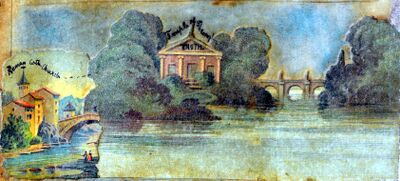
<Untitled> (Captain Burton's work entitled Goa)
We think that those who have taken part anonymously in this controversy, in an attack upon a known writer, ought to have given the public their names and addresses. The writers are known to us, therefore their testimony has been published.
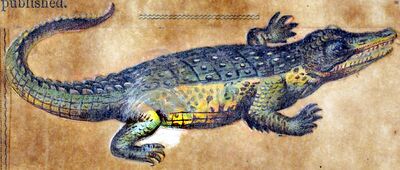
<Untitled> (Allow me to say...)
Sir,—Allow me to say a few more words on the above subject, after which I shall trouble you no further about the matter.
Madame Blavatsky asserts:—
1st. That the children seen with the Todas, and mistaken for Toda children, are those of the Badegas.
2ndly. That the Todas are white as Europeans, and differ entirely in colour from the Badegas.
I have merely to remark that it would be hardly possible for any one to mistake brown, copper-coloured children for the children of a race white as Europeans.
Dr. Carter Blake is mistaken in supposing that I intend to assert absolutely that there are no poisonous snakes on the hills. I merely gave my own experience to show that any immunity from snake-bites, on the highest parts of the hills, might be accounted for without the supposition of occult powers possessed by the Todas. As you descend lower and lower down, no doubt poisonous snakes gradually <... continues on page 7-25 >
Editor's notes
- ↑ image by unknown author. colored butterfly
- ↑ "Isis Unveiled" and the Todas by Baikie, R. (signed as R. Baikie, M.D., late H.E.I.C.S.), London Spiritualist, No. 291, March 22, 1878, p. 136
- ↑ image by unknown author. House in trees on the bank. Note above house: "Temple of Theosophy"; note on roof: "TRUTH"; note above houses on the left: "Roman Cath. Church".
- ↑ Captain Burton's work entitled Goa by Blake, C. Carter, London Spiritualist, No. 291, March 22, 1878, p. 136
- ↑ image by unknown author. crocodile
- ↑ Allow me to say... by unknown author (signed as H. M.), London Spiritualist, No. 291, March 22, 1878, p. 136
Sources
-
London Spiritualist, No. 291, March 22, 1878, p. 136

